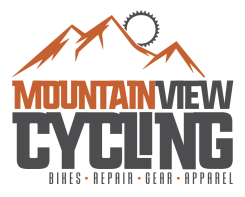What Kind of Bike Should You Buy?
- Posted on
- By Kevin Kurpanek
- 0

"What bike should I buy?"
is one of the most common questions we get. During the journey of buying a new bike, a rider may come across so many "categories" of bikes that it becomes confusing. What is the difference between a cyclocross bike and a gravel bike? What is the difference between a hybrid bike and a fitness bike? What is a transit bike versus a comfort bike? When does a road bike become a race bike or an endurance bike?
In this brief article, we are going to address basic geometry and tire widths rather than address the nuance of every bike or style.
Riding position and bike geometry
is one of the main considerations when selecting a bike for where you want to ride. If you want to cruise paved trails at a lower to moderate pace, then a more upright riding position is right for you with wider tires for comfort. If you want to explore gravel trails, a more forward leaning position will suit your needs. If you want to race and go as fast as possible on the road, a bike with curved (drop) handle bars will be what you want to look for. The head tube angle (the angle of the forks) will be more slack (think chopper motorcycle) as you get into gravel bikes and mountain bikes.
Let's talk tire size.
Generally speaking, the wider the tire the more comfort a rider will experience as there is more air volume to absorb bumps and road conditions. Regarding road bikes, a race (or road only) bike can have a tire width of 23-28mm. An endurance/ touring/ hybrid/ commuting road bike will have widths from 30-42mm. Gravel bikes range from 30-50mm. Tread can vary depending on where you are riding. For example, if you want maximum comfort on the paved trail and don't plan to ride in gravel, then a smoother tire with less knobbies will work for you. If you are exploring gravel trails and turning in mixed conditions, then a tire with knobbies on the sides and a smoother center may be right for you. Some bikes can fit wider tires and cross over from road to gravel. Stop by the shop if you have questions on what will fit your bike.
We hope these two areas of consideration shed more light on how the bike categories are created. In the end, we hope that a rider will not get caught up in what category a bike falls into and instead look at how a bike is set up and if it will do what you set out to do with it.

Comments
Be the first to comment...